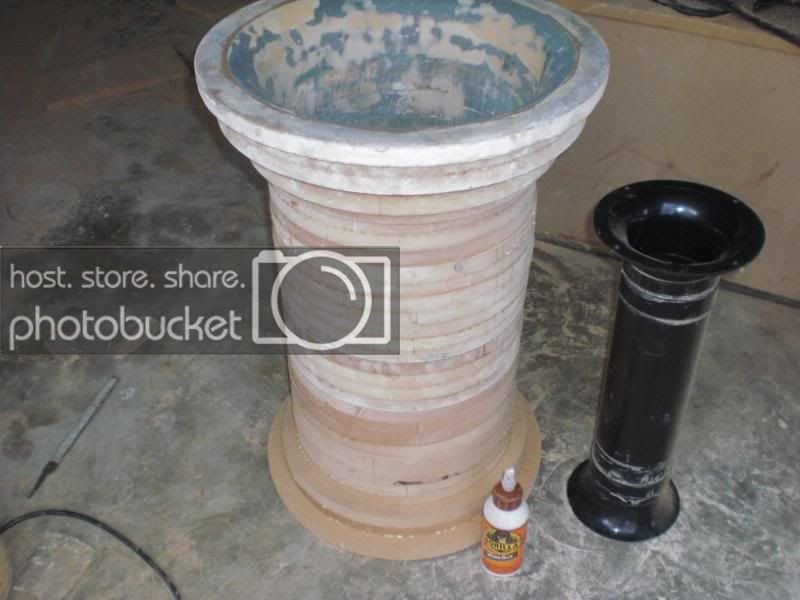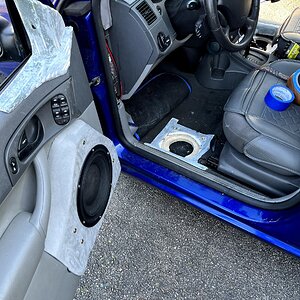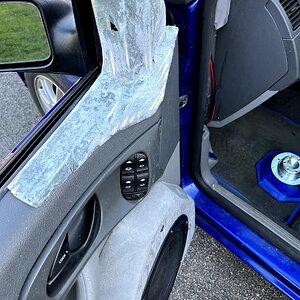7ender 10+ year member
CarAudio.com Elite
I could never find a guide on using aero's, so I thought i'd write one up. With them seemingly becoming increasingly popular, this is needed!
First off, why use an aero port?
-Boxes using aero's are much easier to construct than boxes using slot ports. Simply build a sealed box, and make a hole for the aero.
-They enable you to retune your box without building a completely new box; some people have multiple sets of aero ports of various lengths to change tuning on demand.
-They are more efficient than slot ports, and therefore can be smaller and take up less space in the box. For people that need every inch of their trunk, this is the way to go since it allows for a smaller overall box.
Much of the slot port-aero port debate is personal preference. Many people still stick to slot ports because that's what they're used to and have had no problems with them. However, because of the advantages listed above, aero ports are appearing more often.
Some people also claim that aero ports are louder, but I have yet to see this. It can vary case by case- some boxes may indeed be louder but others will see no gain.
There are a few disadvantages to aero's, in that:
-They cost more. If you buy a 6" flared aero for example, it'll run you about 30-40$.
-They don't provide the structural bracing that a slot port naturally does. Not that this is hard to add if you need it anyways...
So how do we design a box with aero's? There are a number of things to consider when using them.
First, the aero port itself. These are available at places such as precision sound and parts express. They come in various diameters- the most common being 3" to 6". Some people use PVC pipe available at any hardware store because it is much cheaper. However, they dont' have the flared ends that an actual aero port does and therefore MAY cause port noise and have decreased efficiency. This is not a hard fix at all though, as you can simply get a heat gun and mold the PVC to a flare using a bowl or similar shaped object. I have done this and had great success.
When using aero ports you can generally get away with about half the port area of a normal slot port. Where a normal slot port needs about 12" to 16" of port per cubic foot of box, an aero may need 6" to 8". Again though, your results may vary and I have seen many loud boxes that were well out of this range.
For those that can't figure it out, to find your port area use the formula Pi®^2. As a general rule, you want to go with as few ports as possible to get your desired port area. For instance, if you need ~25-30" of port, go with one 6" port rather than two 4" ports even though they have similar areas.
To find the length of the port you need, use the calculator found on http://psp-inc.com/.
As you can see, the length you will need is longer when we use a flared port (as opposed to a straight port), and this is because the air sees the flared port as having slightly more area. Again, I highly recommend using a flare as adding one to pvc is not a difficult process at all.
And for those that haven't taken geometry before, use Pi®^2(height)/1728 to find the volume your port is taking up.
A few more rules to keep in mind are that:
-Try to keep the port's end at least a diameter's distance from any wall in the box. Often though this is not possible, so just keep it as far as you can. This will yield the best results as a port too close to a wall can mess with your tuning.
-Also try to keep the port's end as far as possible from the subwoofer itself.
Besides those things, designing a box with aero's is just like that of a slot ported box! There are many ways to experiment with aero's as well. Many people use external aeros or ports that point to the side. This is usually done when attempting to get maximum spl, but try it out for yourself to find the setup you like best!
Hope I didn't forget anything!
7ender
First off, why use an aero port?
-Boxes using aero's are much easier to construct than boxes using slot ports. Simply build a sealed box, and make a hole for the aero.
-They enable you to retune your box without building a completely new box; some people have multiple sets of aero ports of various lengths to change tuning on demand.
-They are more efficient than slot ports, and therefore can be smaller and take up less space in the box. For people that need every inch of their trunk, this is the way to go since it allows for a smaller overall box.
Much of the slot port-aero port debate is personal preference. Many people still stick to slot ports because that's what they're used to and have had no problems with them. However, because of the advantages listed above, aero ports are appearing more often.
Some people also claim that aero ports are louder, but I have yet to see this. It can vary case by case- some boxes may indeed be louder but others will see no gain.
There are a few disadvantages to aero's, in that:
-They cost more. If you buy a 6" flared aero for example, it'll run you about 30-40$.
-They don't provide the structural bracing that a slot port naturally does. Not that this is hard to add if you need it anyways...
So how do we design a box with aero's? There are a number of things to consider when using them.
First, the aero port itself. These are available at places such as precision sound and parts express. They come in various diameters- the most common being 3" to 6". Some people use PVC pipe available at any hardware store because it is much cheaper. However, they dont' have the flared ends that an actual aero port does and therefore MAY cause port noise and have decreased efficiency. This is not a hard fix at all though, as you can simply get a heat gun and mold the PVC to a flare using a bowl or similar shaped object. I have done this and had great success.
When using aero ports you can generally get away with about half the port area of a normal slot port. Where a normal slot port needs about 12" to 16" of port per cubic foot of box, an aero may need 6" to 8". Again though, your results may vary and I have seen many loud boxes that were well out of this range.
For those that can't figure it out, to find your port area use the formula Pi®^2. As a general rule, you want to go with as few ports as possible to get your desired port area. For instance, if you need ~25-30" of port, go with one 6" port rather than two 4" ports even though they have similar areas.
To find the length of the port you need, use the calculator found on http://psp-inc.com/.
As you can see, the length you will need is longer when we use a flared port (as opposed to a straight port), and this is because the air sees the flared port as having slightly more area. Again, I highly recommend using a flare as adding one to pvc is not a difficult process at all.
And for those that haven't taken geometry before, use Pi®^2(height)/1728 to find the volume your port is taking up.
A few more rules to keep in mind are that:
-Try to keep the port's end at least a diameter's distance from any wall in the box. Often though this is not possible, so just keep it as far as you can. This will yield the best results as a port too close to a wall can mess with your tuning.
-Also try to keep the port's end as far as possible from the subwoofer itself.
Besides those things, designing a box with aero's is just like that of a slot ported box! There are many ways to experiment with aero's as well. Many people use external aeros or ports that point to the side. This is usually done when attempting to get maximum spl, but try it out for yourself to find the setup you like best!
Hope I didn't forget anything!
7ender



